It is quite evident that Leopard geckos are one of the most popular reptile pets all over the world. If you own a leopard gecko, you must know how important it is to arrange them with a comfortable environment to lay their eggs. A leopard gecko egg laying box can hence help in the successful and healthy egg-laying for your pet.
In this blog, we will cover everything you need to know about setting up a leopard egg-laying box including why it’s essential, what materials are needed, how to prepare the substrate, and how to monitor and maintain the box, also creating an ideal environment for your leopard gecko’s nesting behavior with a safe and comfortable egg-laying box.
How Do I Make A Leopard Gecko Egg Laying Box? To create a leopard gecko egg-laying box, use a plastic container filled with a 2:1 ratio of eco-friendly vermiculite and water. Provide a hide for the female gecko and monitor humidity levels. Place the box in the enclosure, and ensure a warm environment. Regularly check for eggs, maintaining optimal conditions for a successful lay.

- Brief Overview Of Leopard Gecko Egg Laying Box
- The Importance Of A Lay Box For Leopard Geckos
- Know About Leopard Gecko Nesting Behavior Prepare Lay Box
- Creating The Ideal Environment For Your Leopard Gecko Lay Box
- The Appropriate Size For A Gecko Egg Laying Box
- Steps To Take Before And After The Laying Process
- Monitoring And Maintaining Your Leopard Gecko Lay Box
- Tips For Selecting The Best Materials For Your Gecko’s Needs
- FAQ About Leopard Gecko Egg Laying Box
- Final Thought 💭
Brief Overview Of Leopard Gecko Egg Laying Box
Creating a suitable egg laying box is essential for leopard geckos. The box makes a safe and cozy environment for egg incubation, simulating their natural nesting behavior. Suitable temperature and humidity levels are vital for successful egg development.
A well-designed egg box ensures productive egg laying and breeding, offering the required conditions for the growth and development of the embryos.
Leopard Gecko Egg Incubator
Incubation is vital for successful hatching of leopard gecko eggs. Giving a controlled environment through an incubator is essential.
Maintaining the right temperature and humidity levels is vital to secure good egg development. The incubation period for leopard gecko eggs ranges from 45 to 60 days, depending on the temperature. Everyday monitoring of the incubator is essential to maintain optimal conditions.
Crested Gecko Egg Laying Box
Offering a suitable egg-laying box is essential for your crested gecko. It allows them to exhibit their natural nesting characteristic and ensures the safety of their eggs.
To create an effective box, you will need materials like a plastic container and a substrate such as vermiculite or perlite.
Build the laying box following the given instructions and maintain it properly by regularly monitoring and cleaning it. Avoid common mistakes to ensure successful breeding and egg incubation.
Crested Gecko Lay Box Substrate
The substrate utilized in the crested gecko lay box is needed in supporting egg incubation. An ideal mixture of moss and vermiculite creates the perfect substrate for crested gecko eggs.
To ensure successful breeding, it is important to maintain the right moisture content in the substrate.
A depth of approximately 3 inches provides adequate insulation for the eggs. Always monitoring the substrate moisture level is essential.
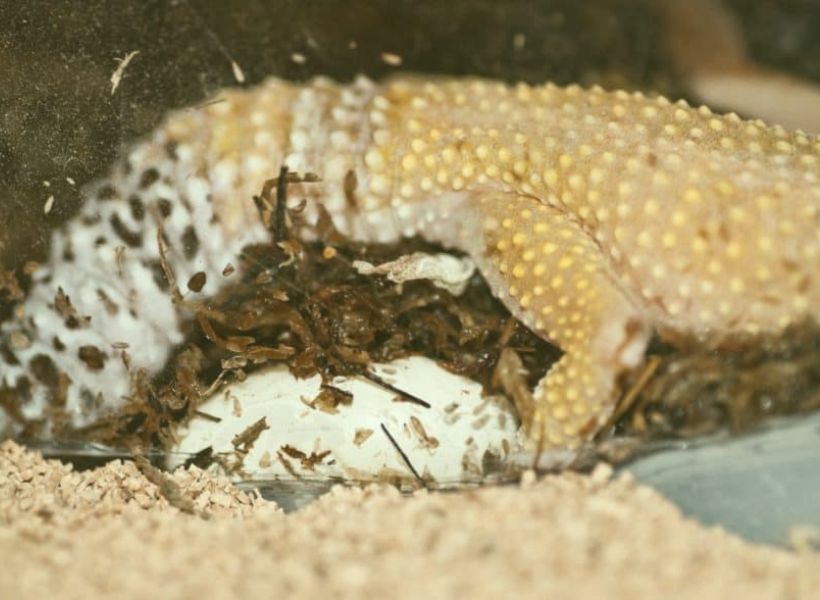
The Importance Of A Lay Box For Leopard Geckos
Allowing an adjustable lay box for leopard geckos is significant for their reproductive health. Female leopard geckos require a nesting area to lay their eggs, and a well-organized lay box helps prevent egg binding and stress.
Once the eggs are laid, it is important to remove them from the lay box for proper incubation and hatching development.
By creating an ideal environment, leopard geckos can successfully breed and ensure the health of their offspring. Better care of leopard geckos includes supplying a lay box to support their natural egg-laying behavior.
Ensures Successful Egg-laying
A well-prepared lay box ensures successful egg laying for female leopard geckos. It provides a suitable laying site and helps prevent the potentially life-threatening condition of egg binding.
Adequate substrate moisture and temperature in the lay box encourage egg laying similar to the gecko’s natural nesting behavior.
Besides, the lay box creates a safe and secluded space for the female geckos to lay their eggs. This ensures a conducive environment for successful breeding and the development of healthy baby leopard geckos.
Facilitates Egg Collection From Lay Box
Having a lay box for your leopard gecko makes it easier to collect eggs for incubation. Eggs laid in the lay box are less likely to be damaged or infertile.
Routinely checking the lay box allows breeders to monitor egg development and ensure better hatchling care and incubation.
Collecting properly labeled eggs from the lay box also helps breeders keep track of breeding records. This facilitates efficient egg collection and improves overall breeding management.
Prepare Well-Designed Lay Box To Reduces Stress
To ensure productive egg laying and reduce stress for your leopard gecko, it is urgent to offer a suitable lay box. Choose the right substrate, such as moist vermiculite or perlite, and maintain the correct temperature and humidity levels.
Place the lay box in a quiet and private area to minimize disturbances during the laying process. Monitor the progress of the eggs and be prepared to provide assistance if needed.
Know About Leopard Gecko Nesting Behavior Prepare Lay Box
Understanding leopard gecko nesting behavior is vital when creating an optimal lay box. These small lizards exhibit specific behaviors, such as digging, to prepare for egg laying.
Observe the nesting behavior of female leopard geckos, breeders can determine when to ensure a suitable lay box. Leopard geckos lay their eggs in the moist substrate, necessitating a well-developed lay box setup.
By preparing a lay box that aligns with leopard gecko nesting behavior, breeders can enhance breeding success and care for the first-time eggs and baby leopard geckos.
Temperature And Other Necessary Requirements For Egg Laying
Successfully, gecko egg laying is perfectly possible when maintaining the correct temperature. These smaller lizards lay their eggs when the temperature is within the optimal range of 77 to 82 degrees Fahrenheit.
To stimulate egg laying behavior, it is important to ensure a temperature gradient in the enclosure. As well, as confirm that calcium supplementation is granted to boost healthy egg development.
Gecko owners can increase the chances of their leopard gecko laying her first eggs, captivating these necessary requirements.
Materials Needed For A Leopard Gecko Egg Laying Box
To make a suitable lay box setup for leopard geckos, you will need a box, substrate, water, and air holes, as well as the right temperature humidity, and optimal moisture levels, which can develop healthy leopard gecko eggs.
Creating a comfortable environment is crucial for a successful egg laying process. Check that the box is of the appropriate size and choose materials that promote a safe nesting area.
Choosing Proper Plastic Container
When selecting a plastic container for your leopard gecko’s egg laying box, it is important to consider a few key factors. Elect for a plastic shoebox or deli cup that survives enough space for the eggs.
Ensure the plastic container has satisfactory ventilation with air holes to maintain airflow. Likewise, choose a container that is easy to clean and maintain.
Lastly, make sure the plastic box is of an appropriate size to accommodate leopard gecko eggs comfortably. You can create an ideal environment for successful egg laying, maintaining overall factors or tips.
Creating The Ideal Environment For Your Leopard Gecko Lay Box
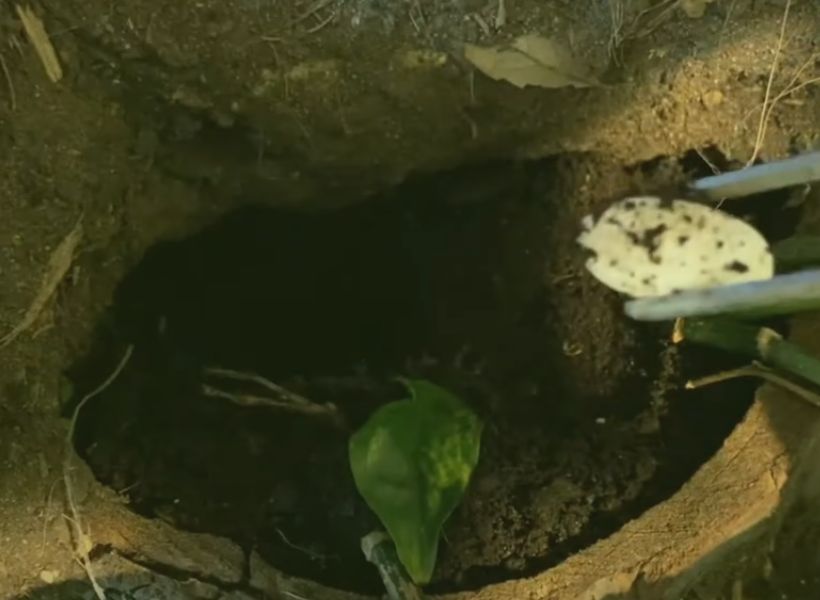
To successfully create the ideal environment for your leopard gecko lay box, it’s vital to give a warm and humid atmosphere.
Maintaining the right temperature and humidity levels in the enclosure is most important. Using vermiculite or perlite substrate helps with moisture and insulation.
Furthermore, establishing a suitable breeding season for your leopard geckos and creating a comfortable, also secure lay box environment for egg incubation are essential steps to ensure good-quality egg laying and incubation.
Preparing The Substrate For Lay Box: Using Vermiculite Or Perlite
Preparing a suitable substrate for leopard gecko eggs, it is recommended to use vermiculite or perlite. These substrates help control humidity levels and provide an ideal incubation medium for reptile eggs.
By preparing a vermiculite or perlite mixture with the right consistency and moisture levels, you can ensure the successful development of the eggs.
This is key for first-time leopard gecko egg laying, as it helps provide a stable and nurturing environment for the growing embryos.
The Appropriate Size For A Gecko Egg Laying Box
Determine the suitable size for a gecko egg laying box based on the number of breeding geckos. Make ample space for comfortable egg-laying and ensure the box allows for temperature and humidity regulation.
Eliminate selecting a box that is too large or too small to maintain optimal conditions. Take into account the size of the geckos, considering smaller lizards may require a smaller box.
Ideal Size Of The Box
When creating a leopard gecko laying box, it is essential to consider the ideal size. The box should have appropriate dimensions to accommodate the process easily.
It should be spacious enough for the eggs to hatch successfully and provide a suitable environment for the female gecko to lay her eggs.
Moreover, the box should not be too big, as it may prevent the gecko from finding her eggs. Choosing a box size that fits well within the enclosure ensures optimal conditions for the breeding process.
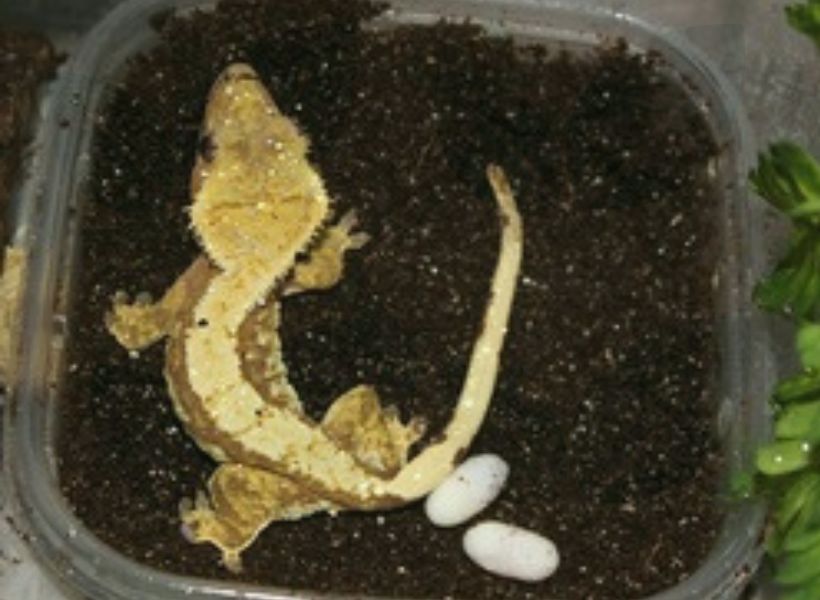
Steps To Take Before And After The Laying Process
Before the female leopard gecko lays her eggs, it is important to prepare the leopard gecko lay box. Ensure that it is set up with a suitable substrate and the right temperature and humidity levels.
Once the eggs are laid, it is crucial to secure and protect them to prevent any damage. Remove infertile eggs from the lay box to maintain optimal conditions for the viable ones.
During incubation, handle the leopard gecko eggs with care and regularly monitor them for any signs of mold, dents, or abnormalities.
Preparing The Box For The Gecko
Before your female leopard gecko lays her first eggs, it’s important to prepare a suitable box. Start by cleaning and sanitizing the lay box to ensure a hygienic environment.
Arrange the box with either paper towels or moss, which provide a comfortable substrate for egg laying. Secure the lay box to prevent any potential hazards and place it in a quiet area where the gecko can lay her eggs undisturbed.
Additionally, consider providing extra calcium supplements to support the female gecko during the egg-laying process.
Additionally, consider providing extra calcium supplements to support the female gecko during the egg-laying process.
Caring For The Eggs And Hatchlings
During the incubation period, it is prioritized to monitor the leopard gecko eggs closely for any signs of hatchlings.
Maintain good temperature and humidity levels using a suitable egg tray or incubator. Once the eggs hatch, deliver the baby leopard geckos with an appropriate enclosure setup and feeding routine.
Check that the eggs hatch without any complications or mold by taking necessary precautions.
Caring for the hatchlings includes providing them with a suitable environment, such as a smaller lizard enclosure, and feeding them with feeder insects like crickets and mealworms.
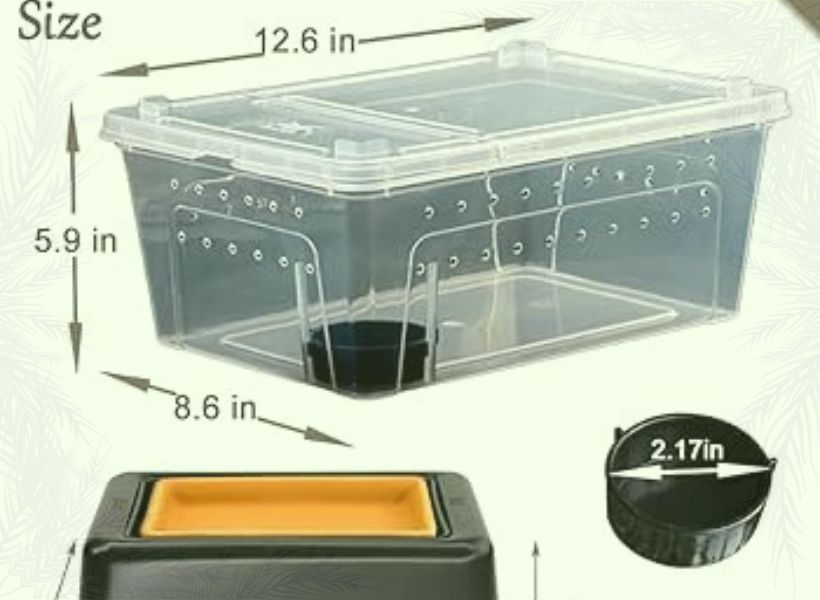
Monitoring And Maintaining Your Leopard Gecko Lay Box
Normally, monitoring the temperature and humidity levels inside your leopard gecko lay box is significant for successful egg incubation.
Keep an eye on your female gecko for any signs of egg-laying behavior, such as digging or restlessness, cleanliness is also important, as you need to remove any waste or debris from the lay box.
It’s a good practice to keep a record of the breeding season and egg-laying dates to track the progress of your leopard geckos.
With appropriate maintenance, reptile owners will be prepared for future breeding seasons and the arrival of new clutches.
Check Humidity Levels Inside Laying Egg Box
To ensure optimal humidity for egg incubation, it is essential to monitor the moisture levels inside the laying egg box. This helps prevent mold or drying out of the eggs.
Providing a proper substrate is crucial in maintaining humidity levels. To accurately measure humidity inside the box, use a hygrometer.
Adjusting humidity levels as needed creates the ideal conditions for successful egg incubation, also you can ensure that your leopard gecko eggs have the best chance of hatching healthy and strong.
Observe Your Gecko Comfortable In Laying Box
To secure your leopard gecko’s comfort while laying eggs, choose a perfect box size and provide a substrate that allows for their burrowing and nesting behavior.
Observe your gecko’s behavior closely to understand they are relaxed and at ease in the laying box. If your gecko appears stressed or uncomfortable, make adjustments to temperature, humidity, and substrate as needed.
It is also beneficial to offer hiding spots and extra calcium to support their egg-laying process.
Monitor The Gecko For Signs Of Egg Laying
Productive egg laying, is essential to monitor your leopard gecko for signs of impending egg-laying behavior. Keep an eye out for behavioral changes such as restlessness, frequent visits to the laying box, or digging.
Moreover, observe physical signs like a swollen abdomen, indicating that eggs are developing. It is also important to consider factors such as breeding season and the age of the female gecko, as these can influence egg laying behavior.
By setting a suitable lay box with air holes, substrate, and moisture, you can encourage your gecko to lay her eggs comfortably. If your gecko experiences any difficulties or complications during the egg-laying process, seek veterinary care promptly.

Maintaining The Temperature And Humidity Levels Of Lay Box
To maintain the temperature within the laying box, it is recommended to use heating elements like heating pads or ceramic heat emitters.
Placing a thermometer inside the box allows for accurate temperature monitoring. Adjustments should be made as needed to achieve the optimal incubation temperature for leopard gecko eggs.
It is important to monitor humidity levels and provide moisture, such as misting the substrate, to prevent the eggs from drying out.
As days pass by, checking and making necessary adjustments to temperature and humidity levels supports successful egg incubation.
Clean The Laying Egg Box
To ensure the health of your leopard gecko and the successful incubation of eggs, it is fundamental to always clean and disinfect the laying box.
Remove any debris, feces, or infertile eggs from the box, and replace the substrate with fresh, clean bedding.
Use reptile-safe cleaning products to sanitize the box, avoiding harsh chemicals that could harm the gecko or eggs.
By maintaining a hygienic environment, you provide the best conditions for the development of healthy baby leopard geckos.
Tips For Selecting The Best Materials For Your Gecko’s Needs
While selecting materials for your leopard gecko’s laying box, consider several factors. Choose an appropriately sized box that allows enough space for comfortable egg-laying.
Choose a substrate like perlite or vermiculite that retains moisture and provides an ideal incubation medium.
Plastic shoebox containers or deli cups with adequate air holes can serve as suitable laying boxes. Paper towels or moss are moisture-retaining and mold-resistant substrates.


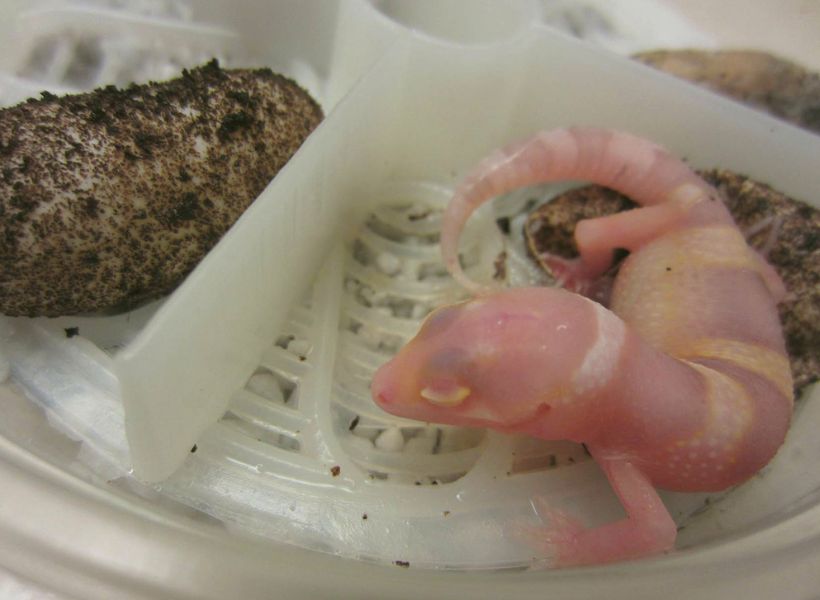
Keep the laying box secure, providing a safe and stable enclosure for your gecko and eggs.
Ultimate Tips For Choosing The Best Location For The Box
When selecting the perfect location for your leopard gecko egg-laying box, there are a few ultimate tips to keep in mind.
Moreover, taking into account the gecko’s natural habitat can help recreate a suitable nesting environment.
FAQ About Leopard Gecko Egg Laying Box
Do Leopard Geckos Need A Lay Box?
Leopard geckos definitely need a lay box. It provides them with a safe and comfortable spot to lay their eggs. The substrate in the lay box should be moist enough for digging, but not too wet to prevent mold growth. It’s essential to have a lay box available in the enclosure at all times, especially during breeding season.
How Do You Make Egg Laying Box Of Leopard Gecko?
To create a leopard egg laying box, start by selecting a suitable container like a plastic shoebox. Fill it with about 2 inches of moistened vermiculite or perlite substrate. Create a small depression in the substrate for the female gecko to lay her eggs. Place the box in the gecko’s enclosure and monitor for signs of egg-laying.
What Do You Use For A Gecko Lay Box?
To create a suitable gecko lay box, choose a plastic container or Tupperware with a lid. Fill it with moistened vermiculite or sphagnum moss as a substrate. Ensure the lay box is easily accessible and spacious enough for the gecko to move comfortably. Place it in a warm, quiet area to encourage usage.
Do Female Leopard Geckos Need A Lay Box?
Yes, female leopard geckos require a lay box to lay their eggs. It is important to give a lay box in their enclosure before they reach sexual maturity. The lay box should have a moist substrate like vermiculite or perlite, and the temperature and humidity levels should be carefully monitored for successful egg laying.
Final Thought 💭
Catering a suitable leopard gecko egg laying box is an important aspect of the successful reproduction and care of these fascinating creatures.
A well-designed lay box ensures a stress-free environment for egg-laying, facilitates easy collection of eggs, and promotes the overall well-being of your geckos.
It is essential to create the ideal nesting conditions by maintaining appropriate temperature and humidity levels, using the right substrate such as vermiculite or perlite, and selecting the proper size and materials for the lay box, likewise observing geckos’ comfort and cleaning box, necessary for the health of your pet and development the eggs.
If you select the best materials for your gecko’s needs, you can provide a safe and comfortable environment for the breeding and hatching process.

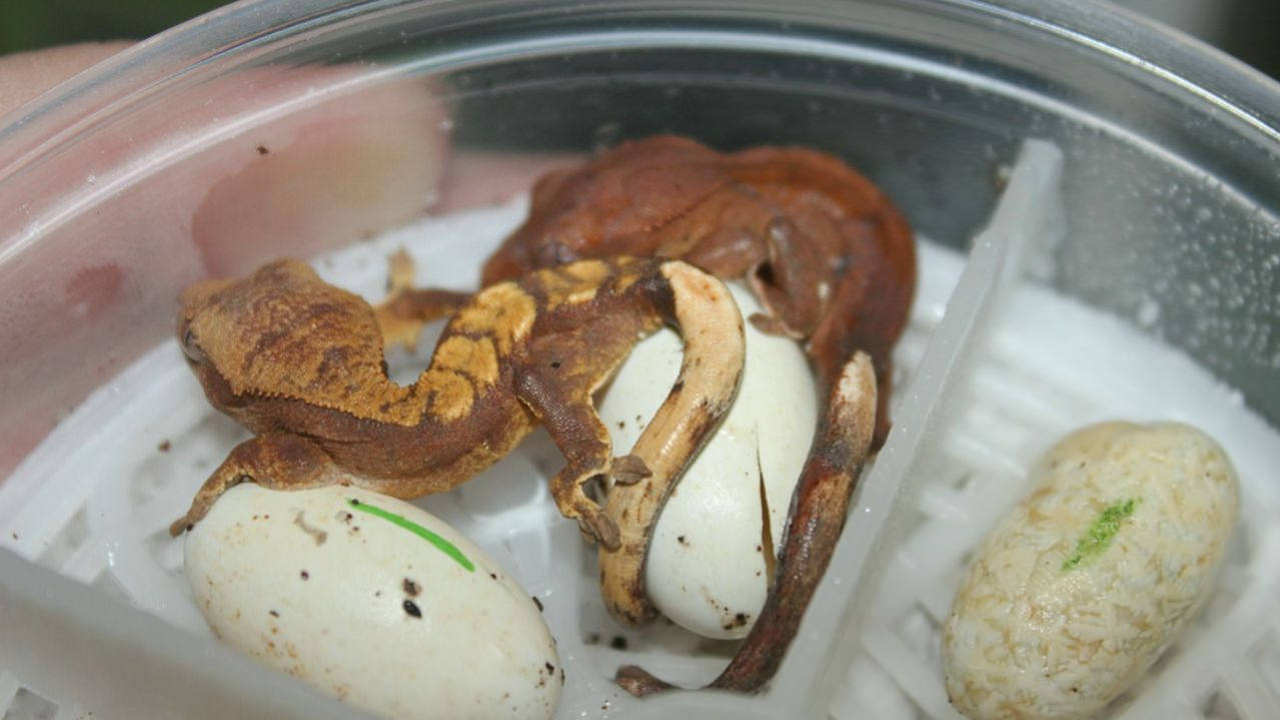

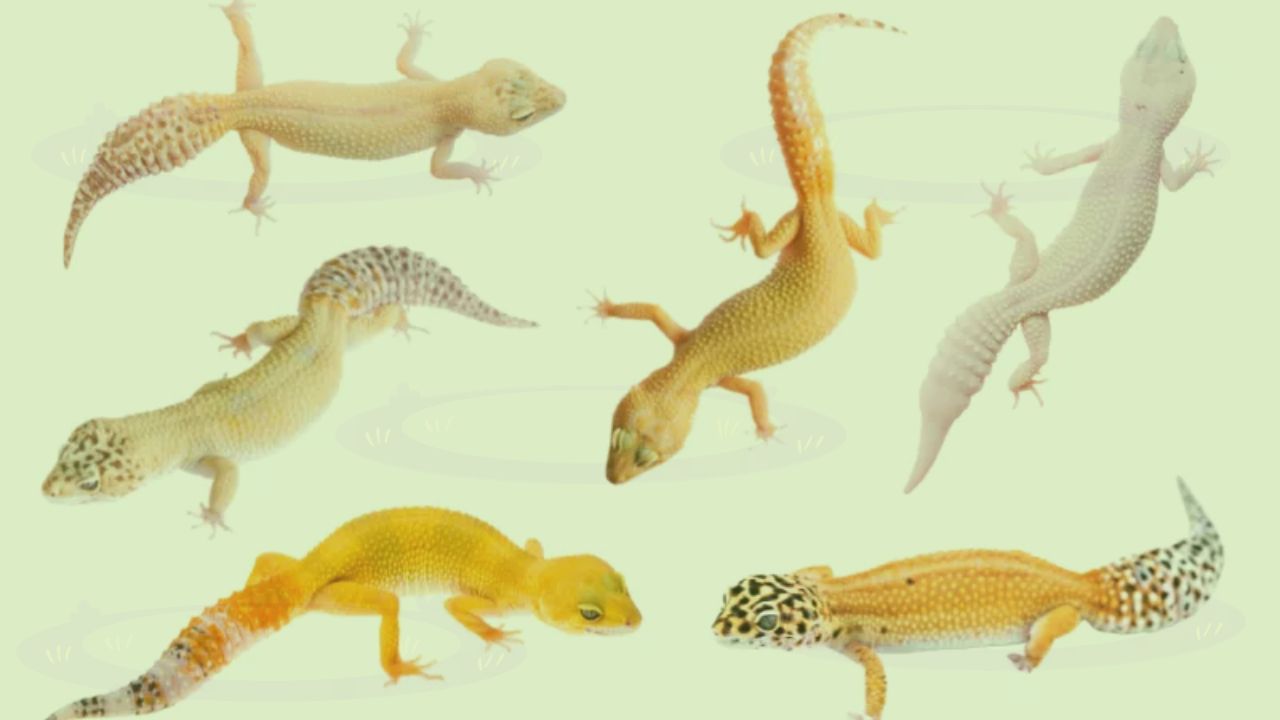

Leave a Reply